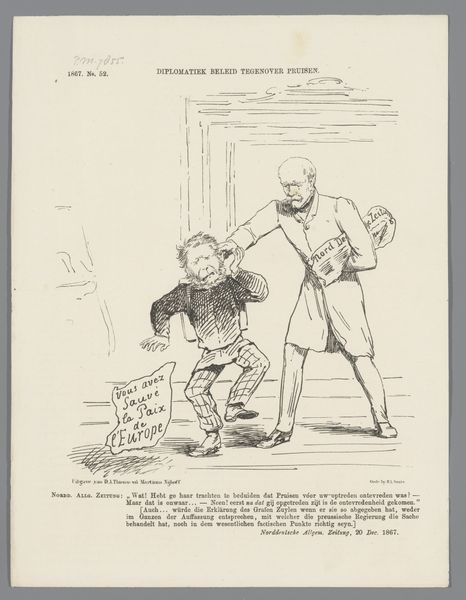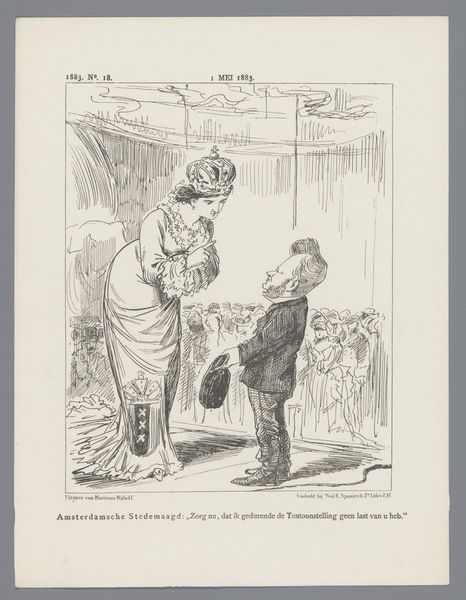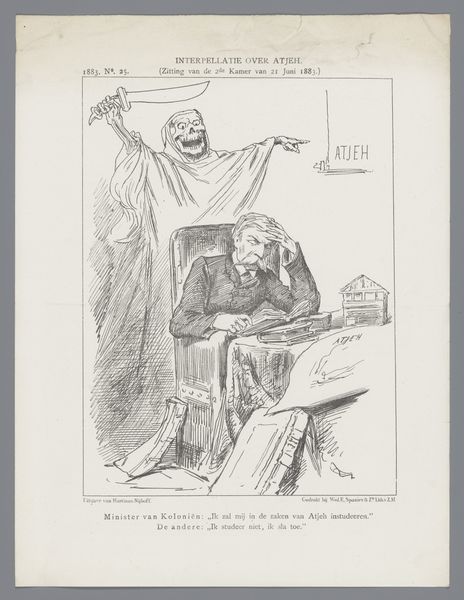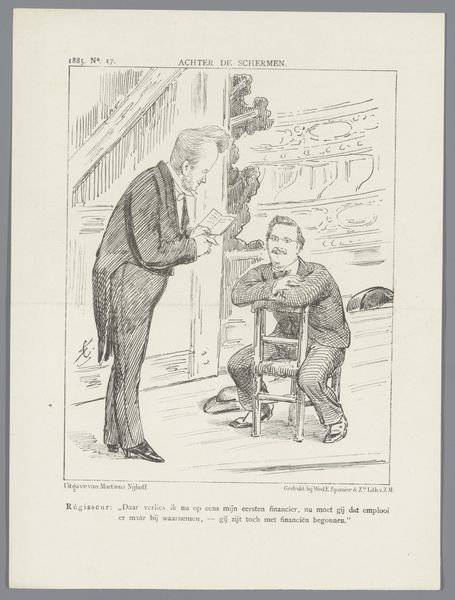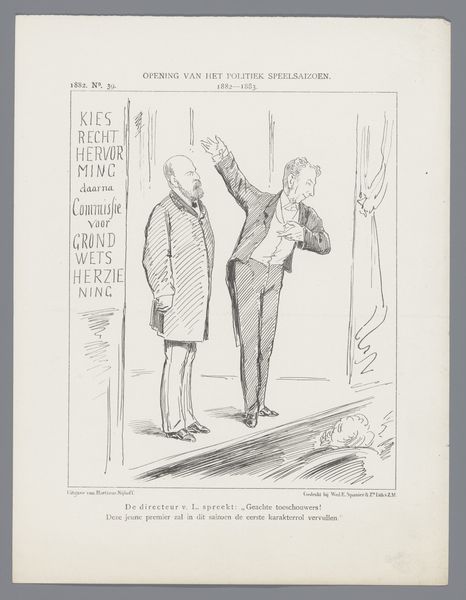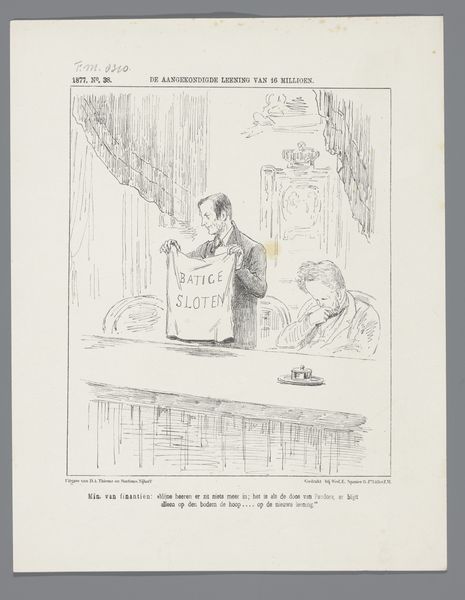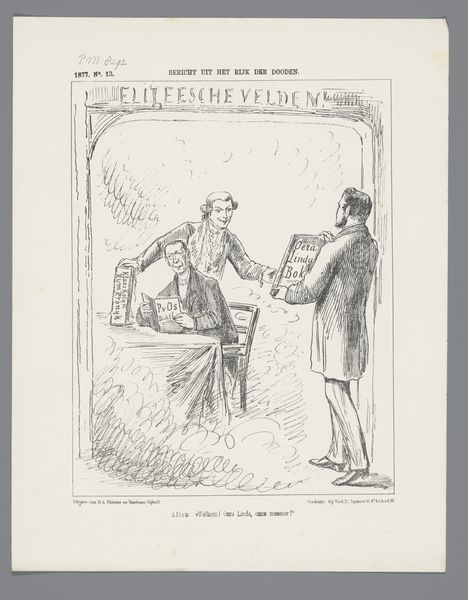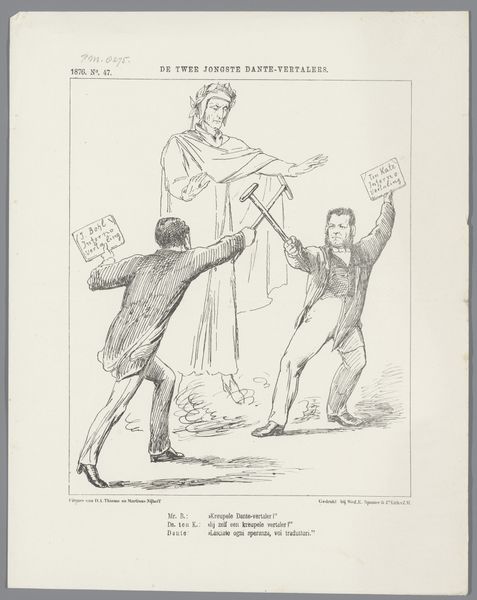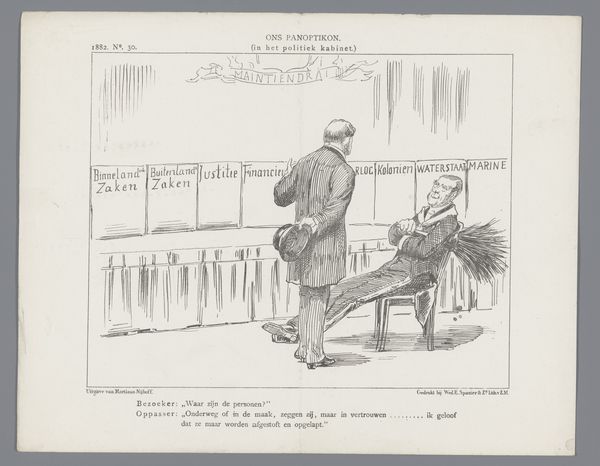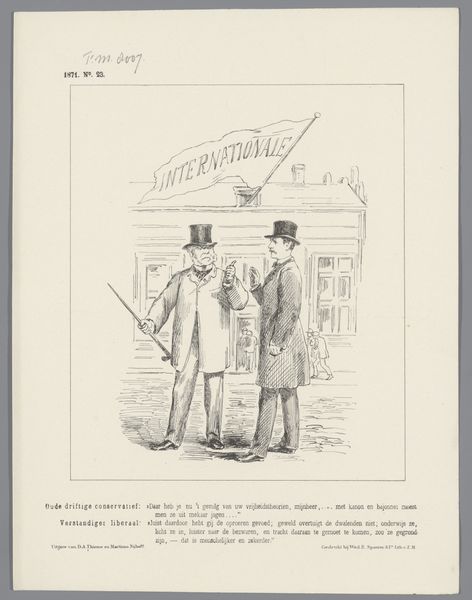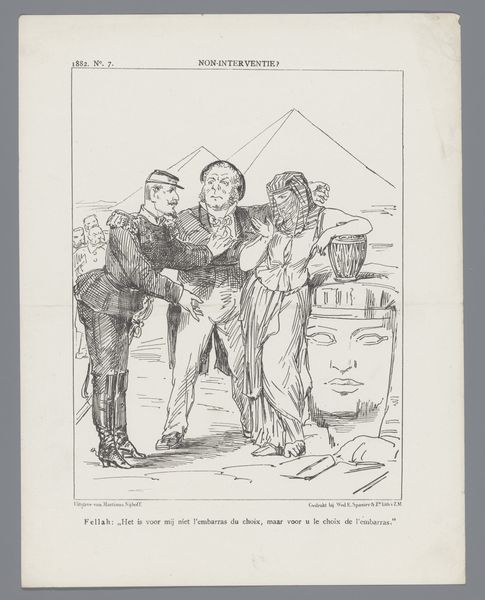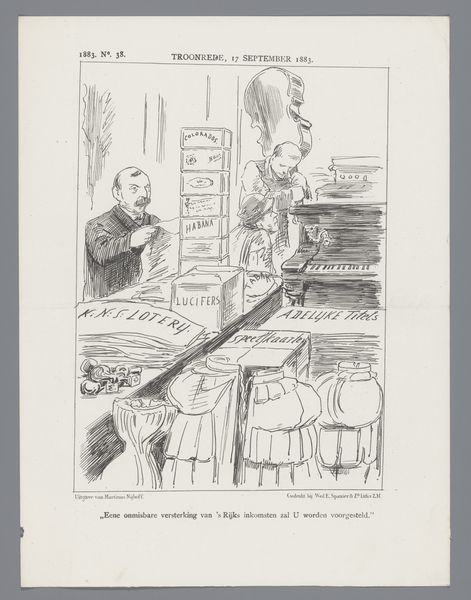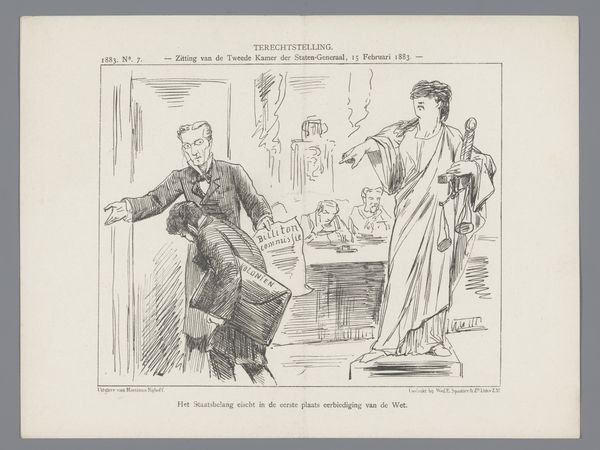
lithograph, print, etching, ink, engraving
#
comic strip sketch
#
narrative-art
#
lithograph
# print
#
etching
#
caricature
#
ink
#
comic
#
orientalism
#
engraving
Dimensions: height 275 mm, width 215 mm
Copyright: Rijks Museum: Open Domain
Curator: This piece, dating from 1883, is titled "Spotprent op de HBS in Indie", which translates to "Cartoon about the HBS in the Dutch East Indies". It's a lithograph, etching, and engraving. Quite a material blend! Editor: My initial impression is… well, it’s a deeply uncomfortable image. The overt power dynamic is striking and unpleasant, like witnessing a subjugation scene frozen in time. Curator: Precisely. It reflects the social and political climate of the Dutch colonial era. The "HBS" in the image refers to the Hogere Burgerschool, a type of secondary school, being introduced in the Dutch East Indies. It essentially speaks about colonial imposition. Editor: And the materials used – the print, etching, and engraving – allowed for mass distribution, playing a crucial role in disseminating such colonial ideologies. You think about who controlled these materials, who had access... it tells a clear story. Curator: It was widely published at the time and sparked quite the outrage and debates back in The Netherlands. This visual culture reinforced hierarchies of power, framing European "civilization" as superior. Editor: Looking at the figures: we have what appears to be a European man forcefully leading someone in traditional Asian dress into a doorway labeled HBS. It screams cultural dominance through forced education. The parasol could represent 'protection' in name only, masking insidious colonial control. Curator: Absolutely. Note how this 'civilizing mission' becomes an oppressive force. The means and intent here become instruments of political rhetoric. Editor: This piece, through its material execution, became an effective tool for perpetuating the existing colonial narrative of the time, reinforcing a very skewed version of reality for those back in the Netherlands. It shaped perspectives on overseas policies, impacting discourse significantly. Curator: Examining this through a socio-political lens illuminates just how artworks served—and continue to serve—as carriers of complex power structures. It forces us to consider not only the image itself, but also its influence on the audiences of its time. Editor: I agree. Considering the material production reveals how these racist tropes are deeply embedded and systematically perpetuated, even down to ink on paper. Curator: Indeed. It’s a powerful reminder of how visual culture can become a crucial political instrument. Editor: Leaving us to consider what new narratives art can help craft now and moving forward.
Comments
No comments
Be the first to comment and join the conversation on the ultimate creative platform.
